CG Trader
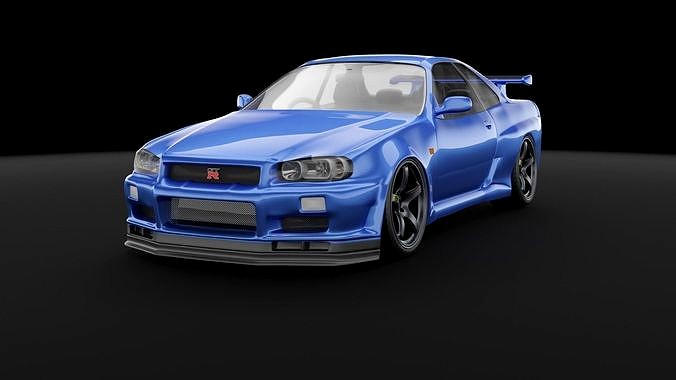
JDM r34 skyline gtr
by CG Trader
Last crawled date: 1 year, 6 months ago
lowerd and camberd JDM r34 skyline gtr The GF-BNR34 (R34) Skyline GT-R, GT-R V·Spec and GT-R V·Spec N1 models were released in January 1999. The R34 GT-R was also shorter (from front to rear), and the front overhang reduced. The valve covers were painted glossy red (colour code Cherry Red Effect Z24 or X1020), as opposed to black in previous models.
Paul Walker used a Skyline GT-R (R34) in the film 2 Fast 2 Furious. A new feature on the R34 GT-R is a 5.8" LCD multifunction display on the center of the dashboard, which shows seven different live readings of engine and vehicle statistics such as turbocharger pressure (1.2 bar max), oil and water temperature, among others. The GT-R V·Spec model added two extra features to the display: intake and exhaust gas temperatures. Nismo Multi-function Displays (MFD) can be bought at an extra cost, they include a lap timer, G-Force meter and an increase in boost pressure measurement to 2 bar. The R34 GT-R was made shorter in response to customer concerns who thought the R33 was too bulky. Like the R33, the new R34 GT-R V·Spec (Victory Specification) models come equipped with the ATTESA E-TS Pro system and an Active LSD at the rear, while standard GT-R models come with the non-Pro system and a conventional mechanical differential. The V·Spec model also had firmer suspension and lower ground clearance, thanks to front and side splitters, as well as a rear carbon fibre air diffuser, designed to keep air flowing smoothly under the car. At the time of the R34's release, like the R32 and R33, Nissan released an R34 V·Spec N1 model. The R34 V·Spec N1 was equipped similar to the R32 and R33 N1 models – a homologation special. It was sold without air conditioning, audio equipment, rear wiper, or boot lining, but ABS remained. The new R34 N1 was also given the new R34 N1 engine. Only 38 known R34 V·Spec N1 models were produced from the factory, 12 of which Nismo used for Super Taikyu racing. The rest were sold to various customers, mostly racing teams and tuning garages. The V·Spec version was also imported into the UK with a number of modifications carried out on these 80 cars. These included 3 additional oil coolers, revised ECU map, full Connolly leather interior, underbody diffusers, stiffer suspension, active rear limited slip differential, extra display feature on the in car display. In additional to the UK, 10 were sold to Hong Kong and Singapore, and 5 to New Zealand although with different changes for their respective markets. Rear view of an R34 GT-R Nür In October 2000, Nissan released the V·Spec II, replacing the V·Spec. The V·Spec II has increased stiffness in the suspension (even stiffer than the original V·Spec) and had larger rear brake rotors. It also comes equipped with a carbon fiber bonnet equipped with a NACA duct, which is lighter than the aluminum that all other GT-R bonnets are made from. Also different on the V·Spec II was an iridium center console and aluminum pedals. The seats were upholstered with black cloth rather than the gray cloth used on previous R34 GT-R models, and the amber turn lenses were replaced with white versions. With the exception of the carbon fibre bonnet, the standard trim level GT-R also received these updates. A total of 18 V·Spec II N1 were built. A total of 1855 V·Spec II were built for Japan, with an additional 2 being sold for the New Zealand market. The V·Spec N1 was replaced with the V·Spec II N1. The same changed applied to the V·Spec N1 were applied to the V·Spec II N1, with the exception of the V·Spec II carbon bonnet which was now unpainted. In May 2001, the M·Spec was released. It was based on the V-Spec II, but had special Ripple control dampers, revised suspension set up, stiffer rear sway bar and a leather interior with heated front seats. The 'M' on the M·Spec stood for Mizuno who is the chief engineer of Nissan. The only other change was the removal of the carbon fiber bonnet which was replaced with the standard aluminium bonnet. In February 2002 Nissan released a final production model of the R34 GT-R called the Skyline GT-R V·Spec II Nür and the Skyline GT-R M·Spec Nür. The Nür was named after the famous German Nürburgring racetrack, where the Skyline was developed. In total 1003 R34 GT-R Nür(s) were produced, 718 were V·Spec II Nürs' and 285 were M·Spec Nürs'. The Nür model featured an improved RB26DETT based on the N1 racing engine. The standard turbochargers were upgraded to larger versions with a slight increase in boost and the ceramic blades were replaced with steel versions. This has increased lag, but the turbo's durability was improved while being able to handle a bigger boost increase. This allowed tuners to increase the boost safely with standard turbos up to 340 kW (450 hp) at the crank. The V·Spec II Nür is based on the regular V·Spec II model, and the M·Spec Nür was based on the regular M·Spec model. Other than the addition of the Nür engine, the Nür models also included a different colour of stitching on the interior trim, as well as a speedometer reading up to 300 km/h (186 mph), gold valve covers instead of red and a gold VIN plate instead of silver. Due to Japanese car industry norms at the time, the car was advertised as having 206 kW (276 hp) but it actually had over 246 kW (330 hp) when it left the factory. Production figures
GT-R (Series 1) = 2,709
V·Spec = 4,193
V·Spec N1 = 38
V·Spec UK = 80
V·Spec Hong Kong = 10
V·Spec New Zealand = 5
V·Spec Singapore = 10
Unknown (Series 1) = 20 (pre-production cars including GT-R (Series 1), V·Spec and V·Spec N1).
GT-R (Series 2) = 1,268
V·Spec II = 1,855
V·Spec II Nür = 718
V·Spec II N1 = 18
V·Spec II New Zealand = 2
M·Spec = 366
M·Spec Nür = 285
NISMO Z-Tune = 19 Note: The Z-tune were built on used cars, which is why that number can not be added to the total figure below.
Total = 11,577
Z-Tune
Nismo originally designed the concept of the Z-tune in 2002 when Nissan was putting an end to the R34 Skyline production. The first Z-tune was built in 2003, using a used 2002 Skyline GT-R V·Spec II. It was built with a concept RB26DETT 'Z1' engine. This engine was based on Nissan's Le Mans GT2 and GT500 racing experiences. As with the racing vehicles a strengthened engine block and stroked crankshaft were utilized. The engine was also bored. With the new displacement of 2.8 L and upgraded turbo-chargers the Z1 produced 370 kW (500 hp). The Z-Tune had a 0–100 km/h (0–60 mph) time in 3.8 seconds and has a top speed of over 327 km/h (203 mph). Nismo was then given the approval from Nissan to build Z-tune models for the Nismo anniversary. Nismo then purchased 18 used R34 GT-R V·Spec, each with less than 29,000 km (18,000 miles) on the clock, they were then completely stripped and were resprayed to a Z-tune Silver, a special color exclusively for the Z-tune. One car was left in its original color of Midnight Purple III. For each of the 18 production models, the 2.8 L engine was revised to allow it to reach 8000 rpm. The turbochargers were supplied by IHI in Japan. The engine is advertised as making as much as 370 kW (500 hp) (for warranty reasons). This second revision of the Z-tune engine is called the 'Z2'. The bodywork is designed with the same functional components used in Nismo's GT500 racing cars, such as engine bay vents on the bonnet and bumpers, as well as wider arches for wider wheels. The Z-tune is also improved with an aggressive suspension setup from Sachs, and a specially designed Brembo brake system. The entire car is essentially handmade, with the car being completely stripped and re-built from the chassis up. Engineers reinforced and stiffened the chassis seam welding in key areas such as the door seams and door frames and added carbon fiber to the strut towers and transmission tunnel and the engine bay, completely redesigning the suspension, drivetrain, engine, gearbox and other components so as to work at maximum efficiency and reliability as is expected of a road-going vehicle. Although Nismo planned on building 20 cars, they ceased production on only 19 (including 2 prototypes). The Z-tune is often regarded as the most expensive (prices for some have been known to exceed US$290,000) street legal GT-R ever built. Replacement
Main article: Nissan GT-R Following the end of R34 production in 2002, Nissan announced they would separate the GT-R model from the Skyline name, creating an entirely new vehicle—though based on the same platform as the Skyline. This new car, now known simply as the Nissan GT-R, debuted in 2007 in Tokyo. Released to consumers in 2008, it was the first GT-R available worldwide, entering the North American market for the first time. Though based on the FM platform used by the V36 generation Skyline, the GT-R uses an evolved Premium Midship (PM) platform. The car retains its heritage by using the chassis code DBA-R35, or simply R35. jdm car racing tire racecar race japan drift tuning supra r34 nissan rim skyline tyre racing car
Paul Walker used a Skyline GT-R (R34) in the film 2 Fast 2 Furious. A new feature on the R34 GT-R is a 5.8" LCD multifunction display on the center of the dashboard, which shows seven different live readings of engine and vehicle statistics such as turbocharger pressure (1.2 bar max), oil and water temperature, among others. The GT-R V·Spec model added two extra features to the display: intake and exhaust gas temperatures. Nismo Multi-function Displays (MFD) can be bought at an extra cost, they include a lap timer, G-Force meter and an increase in boost pressure measurement to 2 bar. The R34 GT-R was made shorter in response to customer concerns who thought the R33 was too bulky. Like the R33, the new R34 GT-R V·Spec (Victory Specification) models come equipped with the ATTESA E-TS Pro system and an Active LSD at the rear, while standard GT-R models come with the non-Pro system and a conventional mechanical differential. The V·Spec model also had firmer suspension and lower ground clearance, thanks to front and side splitters, as well as a rear carbon fibre air diffuser, designed to keep air flowing smoothly under the car. At the time of the R34's release, like the R32 and R33, Nissan released an R34 V·Spec N1 model. The R34 V·Spec N1 was equipped similar to the R32 and R33 N1 models – a homologation special. It was sold without air conditioning, audio equipment, rear wiper, or boot lining, but ABS remained. The new R34 N1 was also given the new R34 N1 engine. Only 38 known R34 V·Spec N1 models were produced from the factory, 12 of which Nismo used for Super Taikyu racing. The rest were sold to various customers, mostly racing teams and tuning garages. The V·Spec version was also imported into the UK with a number of modifications carried out on these 80 cars. These included 3 additional oil coolers, revised ECU map, full Connolly leather interior, underbody diffusers, stiffer suspension, active rear limited slip differential, extra display feature on the in car display. In additional to the UK, 10 were sold to Hong Kong and Singapore, and 5 to New Zealand although with different changes for their respective markets. Rear view of an R34 GT-R Nür In October 2000, Nissan released the V·Spec II, replacing the V·Spec. The V·Spec II has increased stiffness in the suspension (even stiffer than the original V·Spec) and had larger rear brake rotors. It also comes equipped with a carbon fiber bonnet equipped with a NACA duct, which is lighter than the aluminum that all other GT-R bonnets are made from. Also different on the V·Spec II was an iridium center console and aluminum pedals. The seats were upholstered with black cloth rather than the gray cloth used on previous R34 GT-R models, and the amber turn lenses were replaced with white versions. With the exception of the carbon fibre bonnet, the standard trim level GT-R also received these updates. A total of 18 V·Spec II N1 were built. A total of 1855 V·Spec II were built for Japan, with an additional 2 being sold for the New Zealand market. The V·Spec N1 was replaced with the V·Spec II N1. The same changed applied to the V·Spec N1 were applied to the V·Spec II N1, with the exception of the V·Spec II carbon bonnet which was now unpainted. In May 2001, the M·Spec was released. It was based on the V-Spec II, but had special Ripple control dampers, revised suspension set up, stiffer rear sway bar and a leather interior with heated front seats. The 'M' on the M·Spec stood for Mizuno who is the chief engineer of Nissan. The only other change was the removal of the carbon fiber bonnet which was replaced with the standard aluminium bonnet. In February 2002 Nissan released a final production model of the R34 GT-R called the Skyline GT-R V·Spec II Nür and the Skyline GT-R M·Spec Nür. The Nür was named after the famous German Nürburgring racetrack, where the Skyline was developed. In total 1003 R34 GT-R Nür(s) were produced, 718 were V·Spec II Nürs' and 285 were M·Spec Nürs'. The Nür model featured an improved RB26DETT based on the N1 racing engine. The standard turbochargers were upgraded to larger versions with a slight increase in boost and the ceramic blades were replaced with steel versions. This has increased lag, but the turbo's durability was improved while being able to handle a bigger boost increase. This allowed tuners to increase the boost safely with standard turbos up to 340 kW (450 hp) at the crank. The V·Spec II Nür is based on the regular V·Spec II model, and the M·Spec Nür was based on the regular M·Spec model. Other than the addition of the Nür engine, the Nür models also included a different colour of stitching on the interior trim, as well as a speedometer reading up to 300 km/h (186 mph), gold valve covers instead of red and a gold VIN plate instead of silver. Due to Japanese car industry norms at the time, the car was advertised as having 206 kW (276 hp) but it actually had over 246 kW (330 hp) when it left the factory. Production figures
GT-R (Series 1) = 2,709
V·Spec = 4,193
V·Spec N1 = 38
V·Spec UK = 80
V·Spec Hong Kong = 10
V·Spec New Zealand = 5
V·Spec Singapore = 10
Unknown (Series 1) = 20 (pre-production cars including GT-R (Series 1), V·Spec and V·Spec N1).
GT-R (Series 2) = 1,268
V·Spec II = 1,855
V·Spec II Nür = 718
V·Spec II N1 = 18
V·Spec II New Zealand = 2
M·Spec = 366
M·Spec Nür = 285
NISMO Z-Tune = 19 Note: The Z-tune were built on used cars, which is why that number can not be added to the total figure below.
Total = 11,577
Z-Tune
Nismo originally designed the concept of the Z-tune in 2002 when Nissan was putting an end to the R34 Skyline production. The first Z-tune was built in 2003, using a used 2002 Skyline GT-R V·Spec II. It was built with a concept RB26DETT 'Z1' engine. This engine was based on Nissan's Le Mans GT2 and GT500 racing experiences. As with the racing vehicles a strengthened engine block and stroked crankshaft were utilized. The engine was also bored. With the new displacement of 2.8 L and upgraded turbo-chargers the Z1 produced 370 kW (500 hp). The Z-Tune had a 0–100 km/h (0–60 mph) time in 3.8 seconds and has a top speed of over 327 km/h (203 mph). Nismo was then given the approval from Nissan to build Z-tune models for the Nismo anniversary. Nismo then purchased 18 used R34 GT-R V·Spec, each with less than 29,000 km (18,000 miles) on the clock, they were then completely stripped and were resprayed to a Z-tune Silver, a special color exclusively for the Z-tune. One car was left in its original color of Midnight Purple III. For each of the 18 production models, the 2.8 L engine was revised to allow it to reach 8000 rpm. The turbochargers were supplied by IHI in Japan. The engine is advertised as making as much as 370 kW (500 hp) (for warranty reasons). This second revision of the Z-tune engine is called the 'Z2'. The bodywork is designed with the same functional components used in Nismo's GT500 racing cars, such as engine bay vents on the bonnet and bumpers, as well as wider arches for wider wheels. The Z-tune is also improved with an aggressive suspension setup from Sachs, and a specially designed Brembo brake system. The entire car is essentially handmade, with the car being completely stripped and re-built from the chassis up. Engineers reinforced and stiffened the chassis seam welding in key areas such as the door seams and door frames and added carbon fiber to the strut towers and transmission tunnel and the engine bay, completely redesigning the suspension, drivetrain, engine, gearbox and other components so as to work at maximum efficiency and reliability as is expected of a road-going vehicle. Although Nismo planned on building 20 cars, they ceased production on only 19 (including 2 prototypes). The Z-tune is often regarded as the most expensive (prices for some have been known to exceed US$290,000) street legal GT-R ever built. Replacement
Main article: Nissan GT-R Following the end of R34 production in 2002, Nissan announced they would separate the GT-R model from the Skyline name, creating an entirely new vehicle—though based on the same platform as the Skyline. This new car, now known simply as the Nissan GT-R, debuted in 2007 in Tokyo. Released to consumers in 2008, it was the first GT-R available worldwide, entering the North American market for the first time. Though based on the FM platform used by the V36 generation Skyline, the GT-R uses an evolved Premium Midship (PM) platform. The car retains its heritage by using the chassis code DBA-R35, or simply R35. jdm car racing tire racecar race japan drift tuning supra r34 nissan rim skyline tyre racing car
Similar models
cg_trader
$2
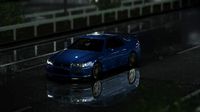
Nissan skyline r34 gtr
...v·spec n1 model. the r34 v·spec n1 was equipped similar to the r32 and r33 n1 models – a...
3dwarehouse
free
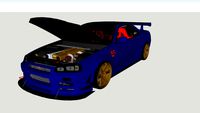
2002 Nissan Skyline GT-R V-Spec II Nur 2.6 Twin Turbo
... #rb26dett #rims #skyline #slammed #sparco #splitter #spoiler #stance #tow_hook #turbo #twin_turbo #vspec #vspec2 #vspecii #ztune
3d_export
$7

nissan skyline gt-r r34 nismo z-tune
...nissan skyline gt-r r34 nismo z-tune
3dexport
nissan skyline gt-r r34 nismo z-tune
cg_trader
$7

Nissan Skyline GT-R r34 Nismo Z-tune
... z-tune
cg trader
nissan skyline gt-r r34 nismo z-tune 3d nissan skyline, available formats blend, ready for 3d animation and ot
3dwarehouse
free

1999 Nissan - GTR R34 GT-R V·spec II
...1999 nissan - gtr r34 gt-r v·spec ii
3dwarehouse
original model: nissan skyline gt-r r34 by ssyrakuza
3dwarehouse
free

1999 Nissan - GTR R34 GT-R V·spec II Rocket Bunny *
...1999 nissan - gtr r34 gt-r v·spec ii rocket bunny *
3dwarehouse
original model: nissan skyline gt-r r34 by ssyrakuza
3dwarehouse
free
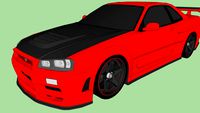
Nismo Nissan Skyline GT-R R34
...y #juke #leaf #micra #murano #navara #nismo #nissan #pathfinder #patrol #primera #quashqai #r33 #r34 #r35 #skyline #sunny #xtrail
3dwarehouse
free

Vehicles - Nissan Skyline R34 GT-R V-Spec II
...n-pro system and a conventional mechanical differential. the v-spec model also had firmer suspension, and lower ground clearance.
3dwarehouse
free

1999 Nissan Skyline GT-R V-Spec II
...rt. all parts color & detail. /from 'd3nke'. #gt #gtr #honda #jdm #nismo #nissan #r32 #r33 #r34 #r35 #skyline #toyota
cg_trader
$10

NISSAN GTR R34 Z TUNE
...
3d model of a nissan gtr r34 z tune. skyline gtr r34 car blender jdm ztune nismo nissan japan jdmcar highpoly 3d sport sport car
R34
turbosquid
$46

R34
...alty free 3d model r34 for download as 3ds, max, obj, and fbx on turbosquid: 3d models for games, architecture, videos. (1205401)
turbosquid
$2
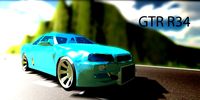
skyline r34
... available on turbo squid, the world's leading provider of digital 3d models for visualization, films, television, and games.
3d_export
$20

Nissan Skyline r34 3D Model
...nissan skyline r34 3d model
3dexport
sky skyline r34
nissan skyline r34 3d model jaga 1832 3dexport
3d_export
$20
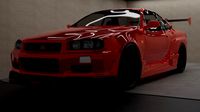
Nissan skyline r34 GTR
...nissan skyline r34 gtr
3dexport
nissan skyline r34. the model was made in blender, the interior of the car is missing.
3d_export
$40
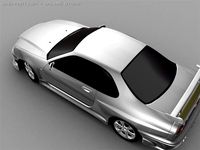
Nissan Skyline r34 3D Model
...nissan skyline r34 3d model
3dexport
car nissan skyline gtr r34
nissan skyline r34 3d model lightowhite 788 3dexport
3d_export
$60
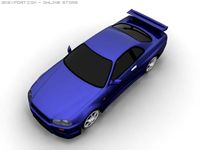
skyline r34 gtr 3D Model
...skyline r34 gtr 3d model
3dexport
nissan skyline r34 gtr sports car
skyline r34 gtr 3d model mhrnuns 7539 3dexport
turbosquid
$20
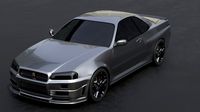
Nissan Skyline R34
...san skyline r34 for download as 3ds, obj, fbx, blend, and stl on turbosquid: 3d models for games, architecture, videos. (1505182)
turbosquid
$10

Car Wheel (R34)
... available on turbo squid, the world's leading provider of digital 3d models for visualization, films, television, and games.
3ddd
$1
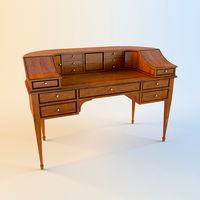
Бюро Francesko Molon R34
... molon , письменный
бюро francesko molon r34, размеры 137х66х94 текстуры не оригинальные
turbosquid
$20

Nissan R34 GTR -Spec
...alty free 3d model nissan r34 gtr -spec for download as blend on turbosquid: 3d models for games, architecture, videos. (1190661)
Jdm
turbosquid
$1

JDM towhook
... available on turbo squid, the world's leading provider of digital 3d models for visualization, films, television, and games.
turbosquid
$1
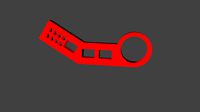
JDM Tow Hook
...squid
royalty free 3d model jdm tow hook for download as obj on turbosquid: 3d models for games, architecture, videos. (1252148)
3d_export
free
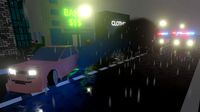
lowpoly jdm car
...del. i hope you enjoy it. if you want me to make a 3d model of something, then write in the comments, i can try, completely free.
3d_export
$5
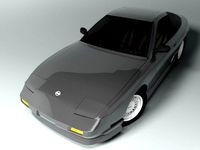
nissan 180sx jdm custom
...nissan 180sx jdm custom
3dexport
japan sportcar
turbosquid
$10

Jdm Rimpack - 3 Rims
...odel jdm rimpack - 3 rims for download as 3ds, obj, and blend on turbosquid: 3d models for games, architecture, videos. (1243300)
turbosquid
$1

Race Wheel | JDM look
... available on turbo squid, the world's leading provider of digital 3d models for visualization, films, television, and games.
3d_export
$99

Subaru Legacy StationWagon JDM 3D Model
...n wagon jdm 2010 avant estate kombi combi wagon 2011 2012 2009 japan
subaru legacy stationwagon jdm 3d model squir 16220 3dexport
cg_studio
$99
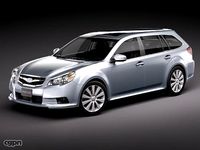
Subaru Legacy Station Wagon JDM 20103d model
... .max .obj .xsi - subaru legacy station wagon jdm 2010 3d model, royalty free license available, instant download after purchase.
turbosquid
$20

Honda
...honda turbosquid royalty free 3d model honda civic jdm 1992 for download as blend on turbosquid: 3d models...
3d_export
$30

toyota soarer 1991 with 1lr-gue engine
...healthy and stay safe everyone there is my next jdm cars 3d model this is toyota soarer, jdm cars...
Skyline
design_connected
$11
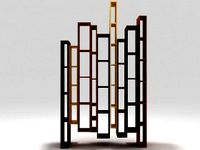
Skyline
...skyline
designconnected
ceccotti collezioni skyline computer generated 3d model. designed by de cotiis, vincenzo.
3d_ocean
$39
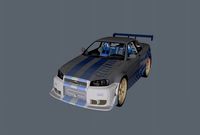
Nissan Skyline
...nissan skyline
3docean
3d model car nissan skyline
nissan skyline tuning
3ddd
free

Sofia Skyline
... skyline , двери
двери фабрики sofia. коллекция skyline
8 цветов
3ddd
$1
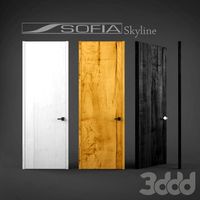
Sofia Skyline
... door , sofia
коллекция sofia skyline.
высота до 3,5 метров.
turbosquid
$50
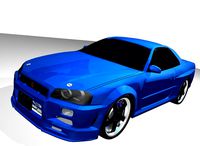
Skyline
... available on turbo squid, the world's leading provider of digital 3d models for visualization, films, television, and games.
turbosquid
$40

skyline
... available on turbo squid, the world's leading provider of digital 3d models for visualization, films, television, and games.
turbosquid
$15
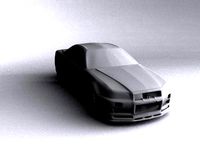
Skyline
... available on turbo squid, the world's leading provider of digital 3d models for visualization, films, television, and games.
3ddd
$1
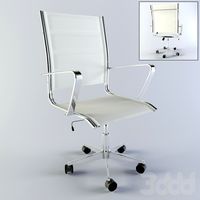
Skyline 1
...skyline 1
3ddd
кресло
office chair skyline 1
3ddd
$1
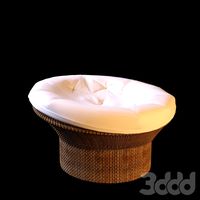
Skyline Creater
...skyline creater
3ddd
ротанг
skyline creater кресло плетеное
3ddd
$1

Sunbrella by Skyline Design
...sunbrella by skyline design
3ddd
зонт , skyline
солнцезащитный зонт by skyline design
Gtr
3d_export
$6

nissan gtr
...nissan gtr
3dexport
nissan gtr with widebody kit
turbosquid
$260

Nissan GTR
...bosquid
royalty free 3d model nissan gtr for download as max on turbosquid: 3d models for games, architecture, videos. (1377451)
turbosquid
$179

Nissan GTR
...squid
royalty free 3d model nissan gtr for download as blend on turbosquid: 3d models for games, architecture, videos. (1278580)
turbosquid
free

Nissan GTR
... free 3d model nissan gtr for download as obj, fbx, and blend on turbosquid: 3d models for games, architecture, videos. (1375881)
turbosquid
$235

nissan GTR
... available on turbo squid, the world's leading provider of digital 3d models for visualization, films, television, and games.
turbosquid
$175
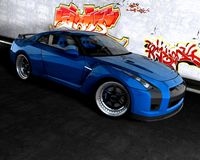
Skyline GTR
... available on turbo squid, the world's leading provider of digital 3d models for visualization, films, television, and games.
turbosquid
$150

GTR SPYDER
... available on turbo squid, the world's leading provider of digital 3d models for visualization, films, television, and games.
turbosquid
$79

Nissan GTR
... available on turbo squid, the world's leading provider of digital 3d models for visualization, films, television, and games.
turbosquid
$79

GTR-32
... available on turbo squid, the world's leading provider of digital 3d models for visualization, films, television, and games.
turbosquid
free

Byakko GTR
... available on turbo squid, the world's leading provider of digital 3d models for visualization, films, television, and games.
